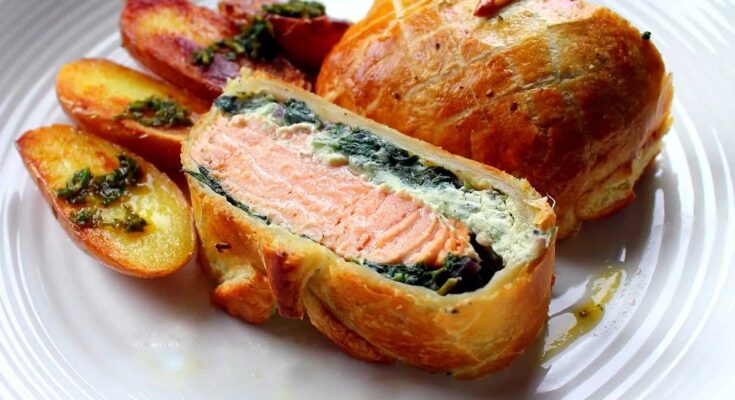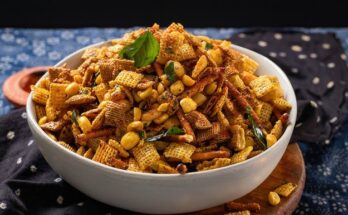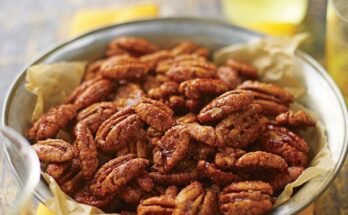Salmon Recipes: Salmon has earned its place as one of the most popular and versatile fish for home cooking.
Whether you’re a novice cook or an experienced foodie, salmon can fit into a variety of cooking styles and cuisines, offering everything from simple weeknight dinners to impressive gourmet meals.
In this guide, we’ll walk you through the health benefits, tips on choosing the best salmon, various cooking methods, and step-by-step recipes that will elevate your salmon game.
Health Benefits of Eating Salmon
Before diving into recipes, let’s talk about why salmon is so highly praised for its health benefits. Salmon is rich in Omega-3 fatty acids, which are essential for brain health, heart function, and reducing inflammation. It’s also packed with high-quality protein, vitamins B and D, and various antioxidants. Best of all, it’s low in calories, making it a nutrient-dense addition to your diet.
How to Choose the Best Salmon
Your cooking success starts with selecting the right salmon. When choosing between wild-caught and farm-raised salmon, many chefs and health experts prefer wild-caught because it tends to be leaner and have a more robust flavor. However, farm-raised salmon can also be a good option for affordability and availability.
When buying fresh salmon, look for firm flesh that is moist, not dry, and a color that’s bright and even. The smell should be mild and ocean-like; a strong “fishy” odor is a red flag. Frozen salmon is also a great option, especially if you don’t plan to use it right away—just ensure there are no ice crystals or freezer burn.
Preparing Salmon: Tools and Ingredients
Cooking salmon doesn’t require fancy equipment, but having the right tools makes it easier. You’ll need:
- A sharp knife for cutting portions or removing skin
- A fish spatula for delicate handling
- Parchment paper or foil for baking
- A meat thermometer for checking doneness
For ingredients, start with basic seasonings like salt, pepper, and olive oil. Fresh herbs, citrus, garlic, and spices like paprika or cumin can help bring out salmon’s natural flavors. Depending on the recipe, you may also need soy sauce, honey, or mustard for marinades and glazes.
How to Properly Season Salmon
You don’t need to overcomplicate seasoning. A sprinkle of salt and pepper before cooking often does the trick. However, if you want more flavor, marinating salmon is a fantastic option. A simple lemon and herb marinade works wonders, or you can try a teriyaki glaze for a sweeter, more savory twist. For marinades, aim for about 30 minutes to 1 hour to let the flavors infuse, but avoid marinating for too long as the acidity can “cook” the fish.
Cooking Methods for Salmon
There are many ways to cook salmon, and each method brings out unique textures and flavors.
Baking Salmon
Baking is one of the easiest methods. To bake, preheat your oven to 400°F (200°C). Place the salmon on a lined baking sheet, season it, and bake for about 12-15 minutes, depending on thickness. You can add lemon slices or herbs on top for extra flavor.
Grilling Salmon
Grilling gives salmon a delicious smoky flavor. Heat your grill to medium-high and brush the grates with oil. Grill skin-side down for about 4-5 minutes, then flip for another 2-3 minutes. Brush with marinades or glazes in the final minutes for added flavor.
Pan-Searing Salmon
For a crispy skin, pan-searing is unbeatable. Heat a little oil in a skillet over medium-high heat. Place the salmon skin-side down and cook for 4-5 minutes until the skin is crispy. Flip and cook for another 2-3 minutes until done.
Poaching Salmon
Poaching is a gentle method that keeps the salmon tender and moist. Simmer water or broth with aromatics like lemon, dill, and peppercorns. Gently lower the salmon into the liquid and cook for about 10 minutes, or until the fish flakes easily.
Air-Frying Salmon
The air fryer is perfect for crispy salmon without all the oil. Preheat the air fryer to 400°F (200°C), season your salmon, and cook for 7-10 minutes, depending on thickness. The result is a beautifully crispy, flaky fish.
Step-by-Step Recipe: Baked Lemon Garlic Salmon
Ingredients:
- 4 salmon fillets
- 2 lemons, sliced
- 4 garlic cloves, minced
- 2 tbsp olive oil
- Fresh parsley for garnish
Instructions:
- Preheat oven to 400°F (200°C).
- Place salmon fillets on a lined baking sheet.
- In a small bowl, mix garlic and olive oil, then brush over salmon.
- Lay lemon slices over each fillet.
- Bake for 12-15 minutes, until the salmon is flaky.
- Garnish with parsley and serve.
Step-by-Step Recipe: Grilled Teriyaki Salmon
Ingredients:
- 4 salmon fillets
- ½ cup soy sauce
- ¼ cup honey
- 1 tsp ginger, minced
- 2 garlic cloves, minced
Instructions:
- In a bowl, mix soy sauce, honey, ginger, and garlic to make the marinade.
- Marinate the salmon for 30 minutes.
- Preheat the grill to medium-high heat.
- Grill salmon skin-side down for 4-5 minutes, flip and grill for another 2-3 minutes.
- Brush with leftover marinade in the final minutes.
Serving Suggestions for Salmon
Salmon pairs well with a variety of side dishes. Some great options include roasted vegetables, quinoa, or a light salad. For wine, a crisp white like Sauvignon Blanc or a light red like Pinot Noir complements salmon perfectly.
Common Mistakes to Avoid When Cooking Salmon
To get the best results, avoid these common pitfalls:
- Overcooking: Salmon cooks quickly, and overcooking can dry it out.
- Under-seasoning: Make sure to season both sides for full flavor.
- Not preheating the cooking surface: Whether grilling or pan-searing, make sure your pan or grill is hot before adding the fish.
Tips for Storing and Reheating Leftover Salmon
Cooked salmon can be stored in the fridge for up to 3 days. When reheating, do so gently at a low temperature to avoid drying it out. A microwave works, but reheating in an oven or skillet is better for texture.
FAQs about Salmon Recipes
1. What is the best way to cook salmon?
Salmon can be cooked in various ways, including grilling, baking, pan-searing, or steaming. The best method depends on personal preference, but many find pan-searing delivers a crispy skin while keeping the inside moist.
2. How long should I cook salmon?
Cook salmon for about 4-6 minutes per side, depending on thickness, until the internal temperature reaches 145°F (63°C).
3. Should I marinate salmon before cooking?
Marinating salmon enhances flavor but isn’t necessary. A quick marinade of lemon juice, garlic, and herbs can improve the taste if you have time.
4. Can I cook salmon from frozen?
Yes, you can cook salmon from frozen by baking it at 425°F for about 20-25 minutes. It’s best to thaw salmon for more even cooking.
5. What side dishes go well with salmon?
Popular side dishes include roasted vegetables, quinoa, rice, and salads. Pairing salmon with light, fresh sides complements its rich flavor.
Conclusion
Salmon is not only a versatile ingredient but also packed with health benefits, making it a must-have in your meal rotation. Its rich source of omega-3 fatty acids, high-quality protein, and essential vitamins makes it a nutritious choice for various diets.
Whether you prefer it grilled, baked, or smoked, there are endless ways to enjoy salmon. Don’t hesitate to experiment with different flavors and cooking methods to create your perfect salmon dish.
By exploring new recipes, you can discover exciting ways to incorporate this superfood into your meals while keeping them both healthy and delicious.



